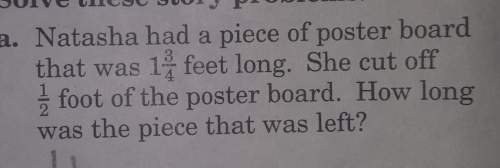
Mathematics, 27.11.2019 21:31 aedmund1225
It has been reported that the probability that an individual will develop schizophrenia over their lifetime is 0.004. in a random sample of 3000 individuals, it was determined that 17 developed schizophrenia. is there evidence to support the claim that the true proportion of people who will develop schizophrenia is different from 0.004 at the α = 0.05 level of significance? use p value approach.

Answers: 2


Other questions on the subject: Mathematics




Mathematics, 21.06.2019 17:00, SillyEve
In tossing one coin 10 times, what are your chances for tossing a head? a tail? 2. in tossing one coin 100 times, what are your chances for tossing a head? a tail? 3. in tossing one coin 200 times, what are your chances for tossing a head? a tail? deviation = ((absolute value of the difference between expected heads and observed heads) + (absolute value of the difference between expected tails and observed tails)) divided by total number of tosses. this value should always be positive. 4. what is the deviation for 10 tosses? 5. what is the deviation for the 100 tosses? 6. what is the deviation for 200 tosses? 7. how does increasing the total number of coin tosses from 10 to 100 affect the deviation? 8. how does increasing the total number of tosses from 100 to 200 affect the deviation? 9. what two important probability principles were established in this exercise? 10. the percent of occurrence is the obtained results divided by the total tosses and multiplied by 100%. toss the coins 100 times and record your results. calculate the percent occurrence for each combination. percent head-head occurrence: percent tail-tail occurrence: percent head-tail occurrence:
Answers: 3
You know the right answer?
It has been reported that the probability that an individual will develop schizophrenia over their l...
Questions in other subjects:

English, 22.02.2021 20:30

Biology, 22.02.2021 20:30

Biology, 22.02.2021 20:30

Mathematics, 22.02.2021 20:30

Mathematics, 22.02.2021 20:30



English, 22.02.2021 20:30

Mathematics, 22.02.2021 20:30




